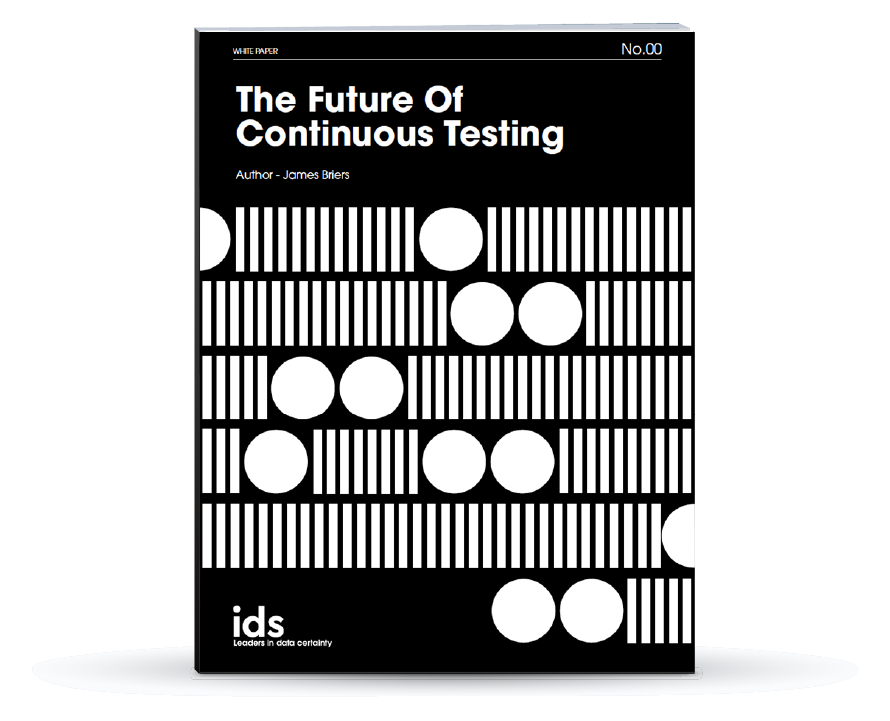Synthetic Data Generation: An Essential Guide

Why it's Essential to be Aware of Synthetic Data Generation
Modern businesses are built on data. Therefore, it’s vital for companies to ensure their data is accurate, secure, and compliant. Failures in compliance are costly, often very public, and extremely damaging to brands and businesses.
They can be catastrophic to any business, if breaches in local or national regulations are not prevented, costing organizations almost $4 million per year.
Synthetic data generation is a data quality management practice used by organizations to help them comply with strict regulations, especially in industries such as finance and healthcare.
Synthesized data is the ultimate mechanism in augmented data quality tools, to protect personally identifiable information (PII).
This technique can be used to support non-production environments for development, testing and training purposes without violating any privacy laws. It’s an attractive choice for risk-averse companies, whether they need to comply with regulations or not, to protect themselves from reputational damage.
What is Synthetic Data?
Synthesis is the process of fabricating new data to form a more complex, yet accurate representation of a business’ existing datasets. All without touching a single instance of a highly protected production data source.
Essentially, raw data is strategically replaced by random values that have been generated by automated processes, whilst maintaining referential integrity between key data points. Synthetic data is designed using a series of business rules to provide a representative view of production data, or, in the case of new systems, data that does not yet exist.
Why is Synthetic Data so Important in 2022?
Protects Sensitive Information from Security Breaches
Industry legislation and data privacy laws - like the Common Law Duty of Confidentiality – are continually evolving to protect people. This increase in scrutiny means that organizations handling personal data must work even harder to ensure their compliance.
In the process of randomizing raw data, synthesized data becomes unidentifiable to data handlers and any personal contact details, for example, cannot be linked to any real people.
As a result, synthesized data is immune to human error. There is no risk of a breach in data privacy from unauthorized personnel who may want to use the data with malicious intent.
Synthetic Data Ensures Data Compliance
By protecting all production data, in non-production environments through data synthesis, organizations can work more compliantly with third-party data handlers who operate outside the GDPR legislation’s regions.
However, for businesses looking to outsource data handling activities to third-party organizations, it’s essential to source data processors with guidelines, accreditations, and frameworks highlighting integrity and attention to compliance.
The rules used to design synthetic datasets provide complete randomization of sensitive information. Therefore, with no direct linkage to a real person and their personal details, data handlers cannot identify individuals in a dataset, eradicating risks of compliance and data breaches.
Organizations, therefore, benefit from a complete protective gate using synthetized data.
Synthetic Data Supports Ambiguous Requirements for Non-Production Environments
Synthetic data removes the issue of ensuring privacy. Creating synthetic data is completely scalable and project teams can generate unlimited quantities of quality data to enable the test environment.
The benefit to businesses is that creating synthetic data at scale can also save development, data, and testing teams time, and up to 70% on data preparation costs. Equally, using automated tools, like iData, can generate referentially intact datasets of entire data ecosystems every time.
This is due to synthesized data’s ability to perform and measure the performance criteria of an application under extreme production workloads. By generating vast data sources representing the same size of data in a production environment, this gives development and testing teams certainty in how the data will look in a live environment.
Data Synthesis vs. Data Obfuscation
The right data synthesis environment is crucial for the success of any pre-production testing. It should provide necessary tools and infrastructure to support test data management, data analytics, and other features.
Test data management in the pre-production environment keeps the data secure and protected. Pre-production environments are a perfect place for data to be synthesized and used for testing and development activities.
These environments are not live, which means that they don't need to comply with regulations, and they can be used to test data. With the right non-production data management, data, development, and testing teams can ensure there are no security breaches or compliance issues with test data.
There are two common practices that may be used to create datasets for testing.
- Data Synthesis
Synthetic data is entirely representative of live data, and has referential integrity, but as it is completely fake data, synthetic data generation removes the risk of a data breach.
This fake data can be generated at scale and subjected to thorough testing to find ‘needle in the haystack’ defects in the software before ever being released into production environments.
Automated data synthesis using tools such as IDS’s iData toolkit, remove bottlenecks caused by manual input, dramatically cutting data preparation time.
- Data Obfuscation
Obfuscation, on the other hand, is another best practice for creating test data to be used in a pre-production or production data environment.
Data obfuscation uses source data to generate automated datasets with similar characteristics to the original. It involves masking key PII (personally identifiable information) data fields to ensure a ‘no way back’ approach.
This makes it difficult for data handlers to trace back to the original data values.
iData's Capabilities in Data Synthesis
All-in-one solutions, like iData, include both obfuscation and synthesis capabilities within a single test data management toolkit.
iData also contains a data trust feature, which allows organizations to use their own datasets as the source of truth to create an audit trail.
Integrated scripts can be edited to generate realistic synthetic datasets. These are industry compliant and keep data private and secure, through 100% of its journey, 100% of the time.
Learn more about how iData can be embedded into your tech stack. Discover how it helps organizations understand and improve their data quality through its abilities in obfuscation and synthesis.

Learn How Continuous Testing can Improve your Business
IDS' Chief Technical Officer, James Briers, sheds light on the solutions to approaching complex data testing projects with mechanical efficiency.




